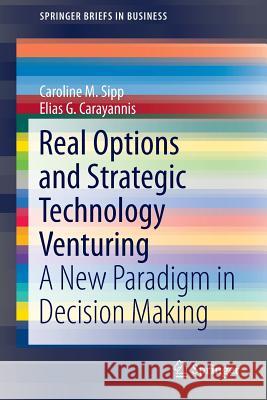Real Options and Strategic Technology Venturing: A New Paradigm in Decision Making » książka
Real Options and Strategic Technology Venturing: A New Paradigm in Decision Making
ISBN-13: 9781461458135 / Angielski / Miękka / 2012 / 124 str.
Real Options and Strategic Technology Venturing: A New Paradigm in Decision Making
ISBN-13: 9781461458135 / Angielski / Miękka / 2012 / 124 str.
(netto: 191,06 VAT: 5%)
Najniższa cena z 30 dni: 192,59
ok. 22 dni roboczych
Bez gwarancji dostawy przed świętami
Darmowa dostawa!
This book seeks to answer "why, when and how are real options used in strategic technology venturing?" This work tests for the role of real options in decision making involving three types of firms in decreasing order of technology-dependence - technology-driven (TD) (where the profit is fully dependent on new technology creation and leveraging), technology-based (TB) (where the profit is enabled and supported by technology) and technology-neutral (TN) (where the profit is almost independent of technology). It also deals with strategic and non-strategic types of decisions driven by real options.
This analysis shows that an environment presenting co-opetitive (simultaneous competition and collaboration) conditions triggers the use of real options (why), that serve to transform the position, posture and propensity of businesses to innovate and thus they co-evolve (when) into more effective and efficient forms of businesses (co-specialization) (how). The authors demonstrate that embracing risk and uncertainty can increase levels and probability of new venture formation. However, their simulation also shows that it should be adapted to the risk profile of the firm and that timing is also a factor to be considered. Although engaging the concepts of real options, this analysis does not focus on a specific investment valuation methodology, but highlights the relationship between knowledge and risk and rather addresses the management of mindsets, as moving towards a systematic conceptualization of real options represents a different paradigm in decision making.











